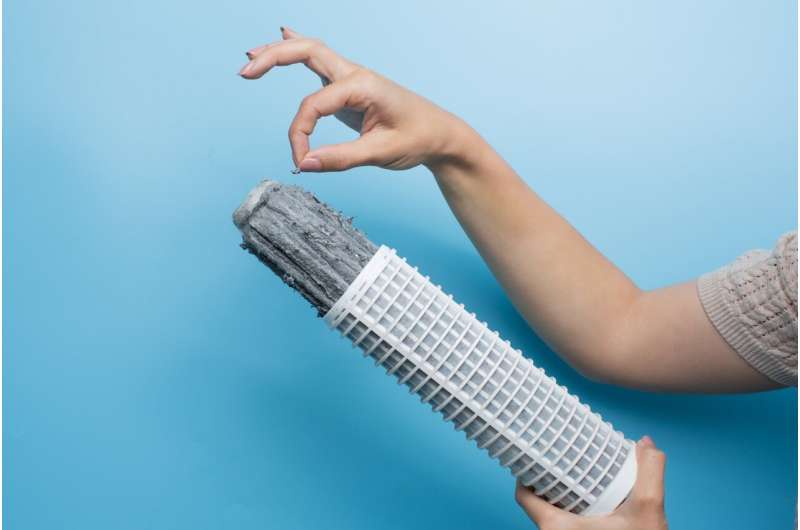This article has been reviewed according to Science X's editorial process and policies. Editors have highlighted the following attributes while ensuring the content's credibility:
fact-checked
trusted source
proofread
Investigating microfiber pollution

The fashion industry is facing several growing social and environmental sustainability issues; from clothing textile waste to the prospect of widespread microfiber pollution (MSF). For the latter, we struggle to even define the problem. While we know that huge amounts of microfibers are entering our ecosystems, we don't yet know the impact this is having.
There's even an issue of public understanding: while many associate microfibers with plastics only, microfibers can also be released from natural fibers. These "natural fibers" have usually been coated with another substance to enhance the look and feel of the fabric or add a specific function, such as dyes, softeners or even making them easier to dry. As such, there's a difference between microfiber—the material that's been designed—and microfiber, the potential pollutant.
Consumer and industry questions at the heart of investigations
Now, a Manchester team has set out to assess the damage that microfibers are doing to our world, and what might be done to tackle it. Led by Dr. Claudia Henninger, an expert in sustainability in the fashion industry and Executive Board Member of the Sustainable Fashion Consumption Network and Arthur Garforth, Professor of Catalysis in Manchester's Chemical Engineering department, with Libby Allen, the team are tackling several key questions. Among them, are:
- What are the current challenges and barriers to microfiber prevention?
- Could different approaches, like filters, play a role?
- Could we "design out" waste like microfibers altogether?
- And where does responsibility lie for this pollution? With the consumer, policy makers, or with the industry?
This is a problem that is all around us. If you use a tumble-dryer or a washing machine with a filter, you'll see the "lint" that is collected (the common name for the visible accumulation of textile fibers). Currently you're advised to put this lint into your household waste—but there are several ways in which these fibers then get released into the environment. Could we instead use the lint as a resource? If not, how should it be disposed of? The team put these consumer questions at the heart of their investigations.
Material characterization and social definitions
Manchester's research focused on characterizing microfibers to track the differences in their size and determine how best to map their impact. The team—supported by fabric created within Department of Materials, and characterized within Chemical Engineering Department—ran a range of tests tracking the whole of the fabric cycle, through creation and pre-treatments, to washing approaches, and then examined the fabrics and MFP under microscopes to look at how much pollution was released with changing variables, what the size and shape of the microfibers were, and where in the process they might be occurring. This information is needed for informed and effective mitigation strategies to tackle microfiber pollution.
Alongside, by undertaking qualitative research, they explored how microfiber pollution is defined from an industry perspective and what challenges or solutions are associated with it. Through a program of in-depth expert interviews, they have found insights to drive the conversation with industry forwards. For example: the need for a clear-cut definition on MFP and a key distinction between what is considered as problem and challenge.
By leading investigations into MFP, the team aims to propose economically viable solutions in partnership with relevant industries. They're also investigating how different stakeholders could work together to take actions throughout the entire product lifecycle; plus improving communication practices which provide the consumer with the scientific facts and the practical solutions to take action.
Provided by University of Manchester




















